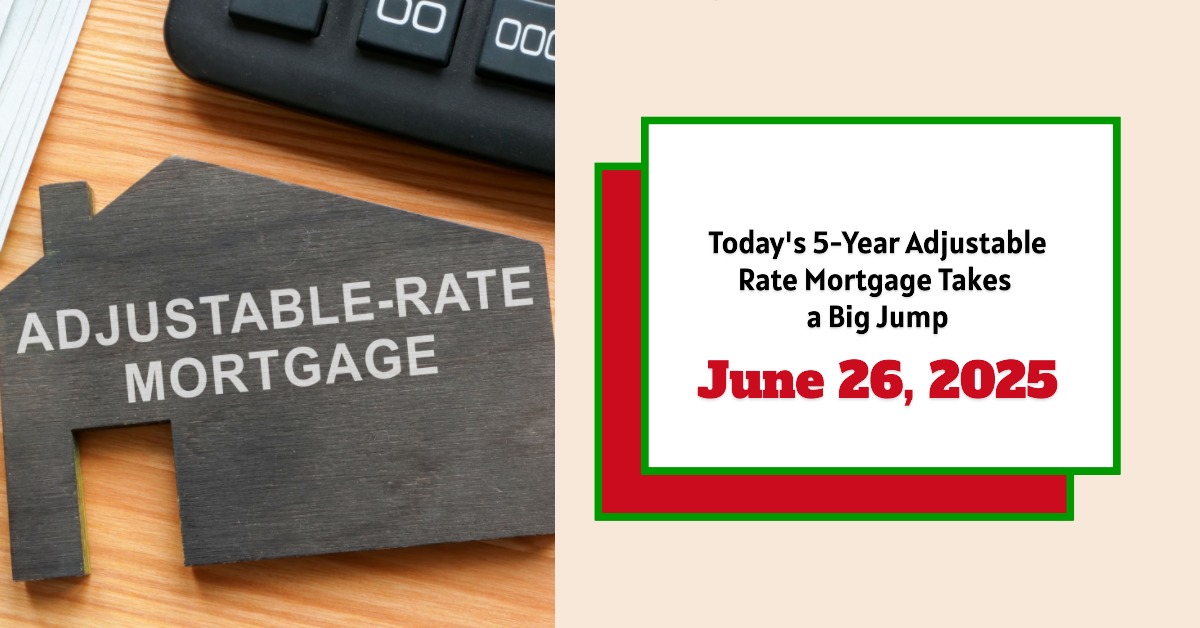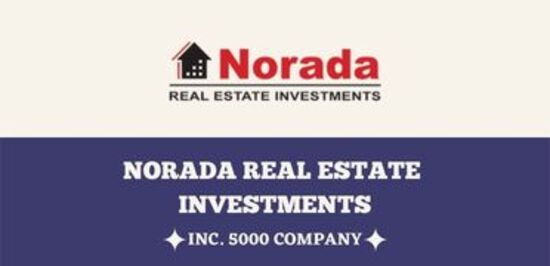Are you in the market for a new home or considering refinancing? If so, keep a close eye on mortgage rates! According to Zillow, the 5-year Adjustable Rate Mortgage (ARM) has seen a significant jump today, June 26, 2025, increasing by 15 basis points to 7.71%. This increase could impact your affordability and overall borrowing strategy; let's dive into what this means for you.
Today's 5-Year Adjustable Rate Mortgage Takes a Big Jump of 15 Basis Points – June 26, 2025
Mortgage rates are constantly in flux, influenced by a myriad of economic factors. While the 30-year fixed rate is considered the benchmark, other loan products like ARMs provide different options that can be advantageous depending on your circumstances.
Here’s a snapshot of how various mortgage rates are behaving today:
- 30-Year Fixed Rate: Down 1 basis point to 6.81%
- 15-Year Fixed Rate: Down 2 basis points to 5.85%
- 5-Year ARM: Up 15 basis points to 7.71%
This mixed bag of movements suggests that while long-term borrowing costs are slightly decreasing, shorter-term adjustable rates are heading in the opposite direction, potentially raising concerns for borrowers banking on rate stability.
Why the Sudden Jump in the 5-Year ARM Rate?
Several factors could be contributing to this uptick. Here are some potential drivers:
- Shifts in the Yield Curve: The yield curve, reflecting the difference between short-term and long-term treasury yields, influences mortgage rates. A steepening curve might signal higher inflation expectations, pushing ARM rates up.
- Federal Reserve Actions: While the Fed doesn’t directly set mortgage rates, its monetary policy decisions impact the broader interest rate environment. Any signals of tightening could lead to increases in ARM rates.
- Investor Sentiment: Demand for mortgage-backed securities (MBS), which bundle mortgages together, also plays a role. If investors are less willing to buy MBS due to perceived risk, lenders may increase rates to compensate.
- Economic Data Releases: Strong economic reports suggesting robust growth may encourage lenders to increase the rates they offer.
Comprehensive Mortgage Rate Overview (June 26, 2025)
To give you a complete picture, here's a detailed table comparing different loan types and their current rates from Zillow:
Conforming Loans
| PROGRAM | RATE | 1W CHANGE | APR | 1W CHANGE |
|---|---|---|---|---|
| 30-Year Fixed Rate | 6.81% | down 0.10% | 7.25% | down 0.13% |
| 20-Year Fixed Rate | 6.65% | up 0.07% | 6.94% | down 0.01% |
| 15-Year Fixed Rate | 5.85% | down 0.11% | 6.13% | down 0.13% |
| 10-Year Fixed Rate | 5.85% | down 0.08% | 6.04% | down 0.03% |
| 7-year ARM | 7.44% | 0.00% | 8.02% | up 0.20% |
| 5-year ARM | 7.71% | up 0.51% | 7.98% | up 0.18% |
| 3-year ARM | — | 0.00% | — | 0.00% |
Government Loans
| PROGRAM | RATE | 1W CHANGE | APR | 1W CHANGE |
|---|---|---|---|---|
| 30-Year Fixed Rate FHA | 6.88% | down 0.45% | 7.91% | down 0.46% |
| 30-Year Fixed Rate VA | 6.29% | down 0.12% | 6.51% | down 0.10% |
| 15-Year Fixed Rate FHA | 5.63% | up 0.03% | 6.59% | up 0.03% |
| 15-Year Fixed Rate VA | 5.84% | down 0.08% | 6.20% | down 0.05% |
Jumbo Loans
| PROGRAM | RATE | 1W CHANGE | APR | 1W CHANGE |
|---|---|---|---|---|
| 30-Year Fixed Rate Jumbo | 7.28% | up 0.01% | 7.73% | up 0.06% |
| 15-Year Fixed Rate Jumbo | 6.95% | up 0.35% | 7.27% | up 0.42% |
| 7-year ARM Jumbo | 7.42% | down 0.10% | 8.00% | down 0.06% |
| 5-year ARM Jumbo | 7.71% | down 0.01% | 8.02% | down 0.07% |
| 3-year ARM Jumbo | — | 0.00% | — | 0.00% |
What This Means for Homebuyers and Refinancers
The rate hike on the 5-year ARM has several implications:
- Higher Initial Payments: Borrowers opting for a 5-year ARM will face higher initial monthly payments compared to the rate environment just yesterday. The initial attraction to ARM’s comes from a lower initial interest when compared to fixed mortgages but is diminished as the rates go up in subsequent years
- Increased Risk: ARMs come with the risk that interest rates could rise after the initial fixed-rate period, potentially leading to significant increases in monthly payments. This risk needs careful consideration.
- Impact on Affordability: For potential homebuyers, especially those on a tight budget, the higher ARM rate could reduce the amount they can borrow or qualify for.
- Refinancing Considerations: Homeowners considering refinancing from a fixed-rate mortgage to an ARM need to weigh the potential savings against the risk of future rate increases.
Recommended Read:
5-Year Adjustable Rate Mortgage Update for June 25, 2025?
Fixed vs. Adjustable Rate Mortgage in 2025: Which is Best for You
Is an ARM Still the Right Choice?
Even with the rate increase, an ARM could still be a suitable option for certain borrowers:
- Short-Term Homeowners: If you plan to move or refinance within the next five years, an ARM might offer lower rates during your ownership period.
- Expectation of Decreasing Rates: Some borrowers might believe that interest rates will decline in the future, making an ARM a potentially beneficial bet. I would suggest not trying to time the market for that reason as there is no surety.
- Financial Flexibility: If you have the flexibility to absorb potential rate increases, an ARM could still save you money in the short term. Flexibility here refers to that you should be ready in case the interest surges to a point you are not able to afford anymore to offset the monthly liability.
Fixed-Rate Mortgages: A Safe Haven?
While ARMs flirt with potential savings and risks, fixed-rate mortgages offer stability, especially now. With rates for 30-year and 15-year fixed mortgages showing slight decreases, they could be an attractive alternative for those seeking predictability in their monthly payments. The current 30-year fixed rate sits at 6.81%, a good option for stability in the long run.
Strategies to Navigate the Current Mortgage Rate Climate
- Shop Around: Don't settle for the first rate you see. Get quotes from multiple lenders to find the best deal.
- Improve Your Credit Score: A higher credit score can result in lower interest rates. Work on paying bills on time and reducing your debt.
- Increase Your Down Payment: A larger down payment reduces the loan amount and could qualify you for a lower rate.
- Consider Points: Paying points upfront can lower your interest rate. Calculate whether the upfront cost is worth the long-term savings.
- Consult a Mortgage Professional: A mortgage broker can guide you through the options and help you make an informed decision.
The Bottom Line: Stay Informed and Adapt
The mortgage market is dynamic, and rates can change quickly. Staying informed about the latest trends and understanding how they impact your financial situation is crucial. Whether you're a first-time homebuyer, a seasoned homeowner looking to refinance, or an investor, careful planning and a well-thought-out strategy are essential to securing the best possible mortgage terms.
I'd advise approaching any mortgage decision with caution and diligence. Understanding your risk tolerance, financial goals, and the potential impact of rate changes is key to making the right choice for your future.
Capitalize on ARM Rates Before They Rise Even Higher
With fluctuating adjustable-rate mortgages (ARMs), savvy investors are exploring flexible financing options to maximize returns.
Norada offers a curated selection of ready-to-rent properties in top markets, helping you capitalize on current mortgage trends and build long-term wealth.
HOT NEW LISTINGS JUST ADDED!
Connect with an investment counselor today (No Obligation):
(800) 611-3060
Also Read:
- Will Mortgage Rates Go Down in 2025: Morgan Stanley's Forecast
- Expect High Mortgage Rates Until 2026: Fannie Mae's 2-Year Forecast
- Mortgage Rate Predictions 2025 from 4 Leading Housing Experts
- Mortgage Rates Forecast for the Next 3 Years: 2025 to 2027
- Will Mortgage Rates Ever Be 3% Again in the Future?
- Mortgage Rates Predictions for Next 2 Years
- Mortgage Rate Predictions for Next 5 Years
- Mortgage Rate Predictions: Why 2% and 3% Rates are Out of Reach
- How Lower Mortgage Rates Can Save You Thousands?
- How to Get a Low Mortgage Interest Rate?
- Will Mortgage Rates Ever Be 4% Again?



